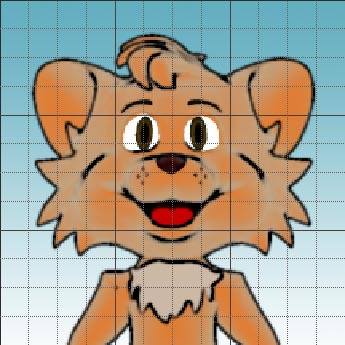Skip over navigation
Have you ever tried drawing the same picture but a different size?
Here is a very simple picture of a cat's face, drawn on a square grid:

The grid lines on this picture will help to make it easier to draw different sizes.
Using grid lines to help you, can you draw the same cat's face but twice as wide and twice as high?
Can you draw the cat's face half as wide and half as long?
You may like to use this sheet with the grids drawn for you.
We would love to receive your pictures, so please do scan them in and send them to us.
Or search by topic
Number and algebra
Geometry and measure
Probability and statistics
Working mathematically
Advanced mathematics
For younger learners
Scale Draw
Age 5 to 7
Challenge Level 





- Problem
- Getting Started
- Student Solutions
- Teachers' Resources
Scale Draw
Have you ever tried drawing the same picture but a different size?
Here is a very simple picture of a cat's face, drawn on a square grid:

The grid lines on this picture will help to make it easier to draw different sizes.
Using grid lines to help you, can you draw the same cat's face but twice as wide and twice as high?
Can you draw the cat's face half as wide and half as long?
You may like to use this sheet with the grids drawn for you.
We would love to receive your pictures, so please do scan them in and send them to us.
Why do this problem?
This problem introduces children to the idea of scale.Possible approach
Key questions
How many squares along the top edge of the grid is the point of each ear?
So can you work out where the point will go on a different grid?
How many squares along and down does each eye go?

